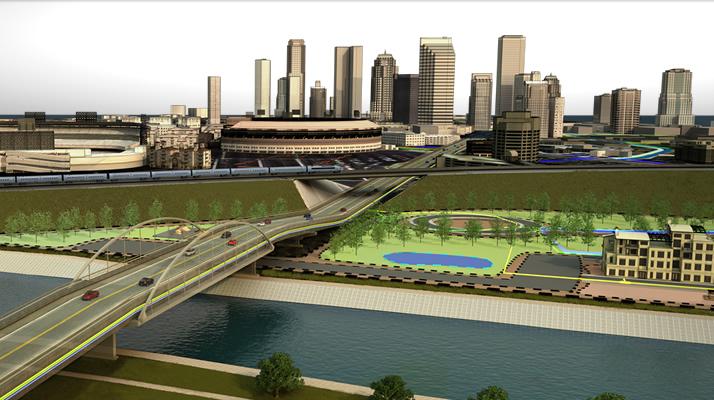State and Local Agencies Take Control of Infrastructure Modernization Project Success

The importance of infrastructure modernization cannot be understated in today’s environment of aging roadways, bridges and transit systems. However, project life-cycle coordination has kept many state a local agencies from completing these projects on time and within budget due to the inflexible and ineffective nature of traditional paper-based methods. Add in the complexity of balancing multiple-and sometimes conflicting – demands and priorities, and these projects an quickly become a headache.
Recently, DLT Solutions and Autodesk presented a three-part webinar series entitled “What Does Infrastructure Success Look Like?” The series explored how agencies are overcoming the challenges of infrastructure modernization projects and driving success in today’s landscape. It also shared real life examples of how agencies used the use the Autodesk® Infrastructure Design Suite to stay in control of their designs and keep projects moving forward, within budget and on target.
Here are few of the series’ highlights:
- For more than 50 years, the Alaskan Way Viaduct served as the main north-south highway through Seattle. But in 2001 an earthquake damaged the road, heightening concerns over its seismic safety. Together, the Washington State Department of Transportation and engineering firm Parsons Brinckerhoff partnered to find a solution to replace the aging infrastructure, but needed a way to clearly communicate design proposals between project stakeholders and the general public. Doing so would ensure the public understood the project by visualizing it.Using Autodesk solutions, the team was able to create interactive visualizations and simulations of the project that were easily understood by non-technical users. This represented a new approach, delivering tremendous efficiency in the design process and allowing them to quickly develop “what-if” scenarios to inform design decisions.
- The city of Beloit, Wisconsin needed to design and construct a new cul-de-sac in a local industrial park within six weeks, the project included a new urban street, reconstructing existing rural streets and designing and constructing new water mains, sanitary sewers, storm sewers and a sidewalk. The city also faced last minute changes from the industrial owner, necessitating a massive redesignThanks to AutoCAD Civil 3D, the city was able to easily accommodate this tight time frame and late-stage design change. The software made it simple to visualize the project and adjust the designs on the spot. Now, the city is able to share digital design information with developers surveyors, contractors, and other constituents.
- In El Dorado County, California, a series of modification to a road-design project in Cameron Park needed to be completed to a nearby commercial and residential development. The development was expected to create measurable increase in traffic congestion, road use, and accidents. Initially, a consultant used traditional 2D methods to create hard copies of the design drawings, but during the review process it was found that significant grading and utility work would need to be incorporated. Using traditional methods to evaluate the feasibility of those changes would have taken weeks or months. With help from AutoCAD Civil 3D, engineers were able to create a higher-quality design in much less time and reassure the County Board that the proposed modifications would actually work.
Autodesk Infrastructure Design Suite provides the clarity, transparency, and predictability required in today’s infrastructure projects. It also makes it easy for state and local governments to properly coordinate internal public works, planning and management resources, as well as engage external private contractors – increasing the success probability of every project.
Check out the full series at www.dlt.com/infrastructuresuccess-webinarseries.
















































